
Based on the excerpt, how does the EU help Eastern European member countries?
A The EU uses the same currency in all member countries.
B The EU creates a strong, competitive trading bloc.
C The EU provides national security for its members.
D The EU helps member countries set up their governments.
B The EU creates a strong, competitive trading bloc.
Why were the Middle Ages given their name?
A They were a transition period between ancient and modern times.
B They refer to the midpoint of civilization’s history.
C They are neither young nor old.
D They came just before the Dark Ages.
A They were a transition period between ancient and modern times.
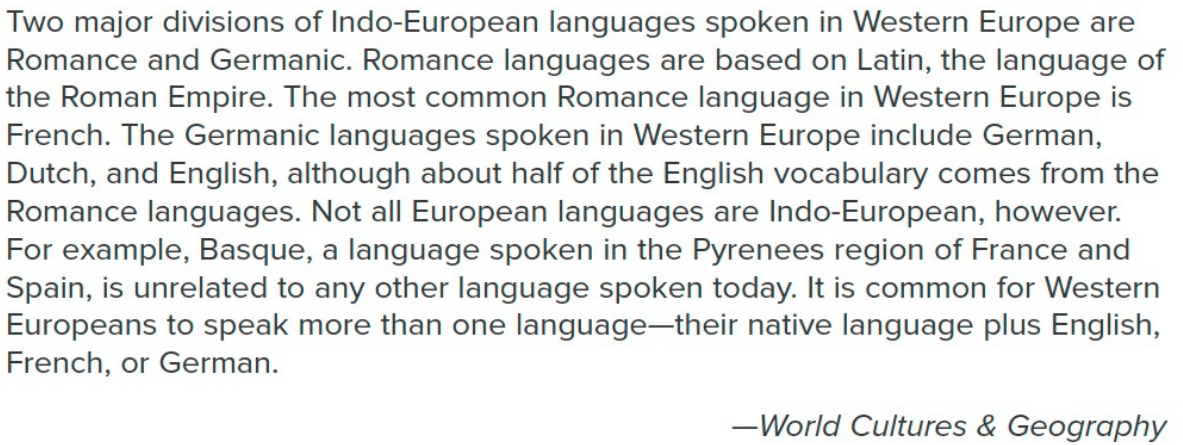
Based on the excerpt, what is one trait that is common among Western Europeans?
A They always speak English in public.
B They are bilingual.
C They speak Latin as their primary language.
D They speak only their native language.
B They are bilingual.
Which historical factor most influenced the breakup of the Soviet Union in 1991?
A Many former Soviet states adopted a communist government.
B Many former Soviet states had once operated as democracies.
C Many former Soviet states had once been independent nations.
D Many former Soviet States used English as the official language.
C Many former Soviet states had once been independent nations.
Which two countries form the Iberian Peninsula?
A Spain and Italy
B Spain and Portugal
C Norway and Sweden
D Denmark and Finland
B Spain and Portugal
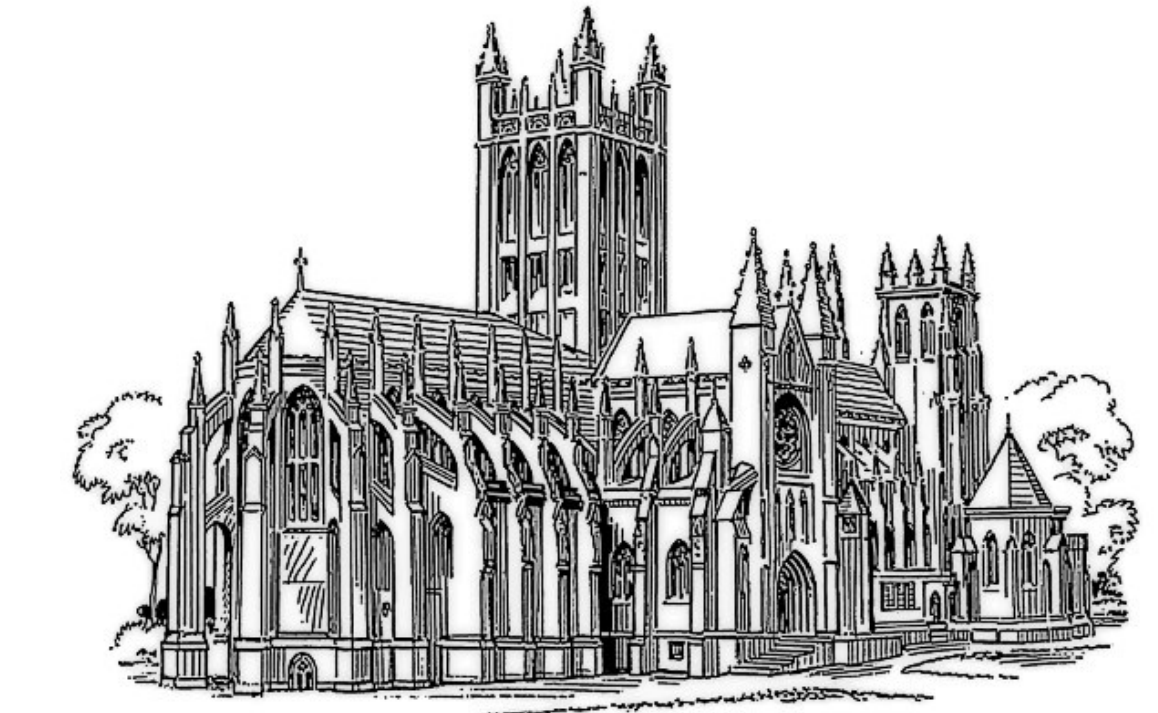
The architectural example above is common throughout much of Western Europe. This type of architecture reflects the cultural influence of —
A wealthy donors in Europe
B Christian values in Europe
C Greek philosophy in Europe
D cultural convergence in Europe
B Christian values in Europe
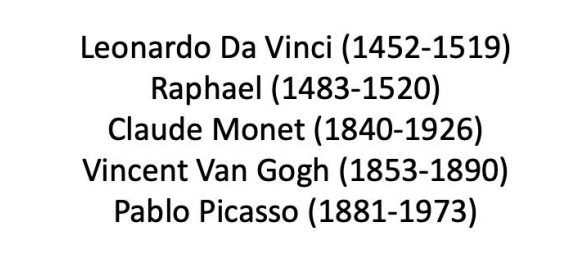
Which of the following would be an appropriate title for the list of people above?
A Authors of Folktales and Stories
B Famous Politicians
C Masters of Works of Art
D Famous Composers
C Masters of Works of Art
Which is an accurate statement about World War I?
A It involved only the countries of Western Europe.
B It grew out of political changes and rivalries among European powers.
C It led to Germany’s division into two countries.
D In the end, Germany was pardoned for starting the war.
B It grew out of political changes and rivalries among European powers.
Which country in Northern Europe uses geothermal energy to heat its capital city?
A Denmark
B Iceland
C Finland
D Sweden
B Iceland
What triggered the beginning of World War II?
A Germany invaded the Soviet Union.
B Germany invaded Poland.
C The Soviet Union attacked Germany.
D The Soviet Union invaded Poland.
B Germany invaded Poland.
Which of the following is a direct effect of the collapse of communism in Eastern Europe?
A The region has stepped up its production of military hardware.
B National traditions and identity have grown stronger in the region.
C The practice of religion has gone into decline in the region.
D The region has been cut off from international popular culture.
B National traditions and identity have grown stronger in the region.
Which of the following was a result of the loss of Soviet control in Eastern Europe?
A a refusal to adopt newer educational systems
B the loss of national traditions and identity
C the rising influence of international popular culture
D a migration of the population to rural areas
C the rising influence of international popular culture
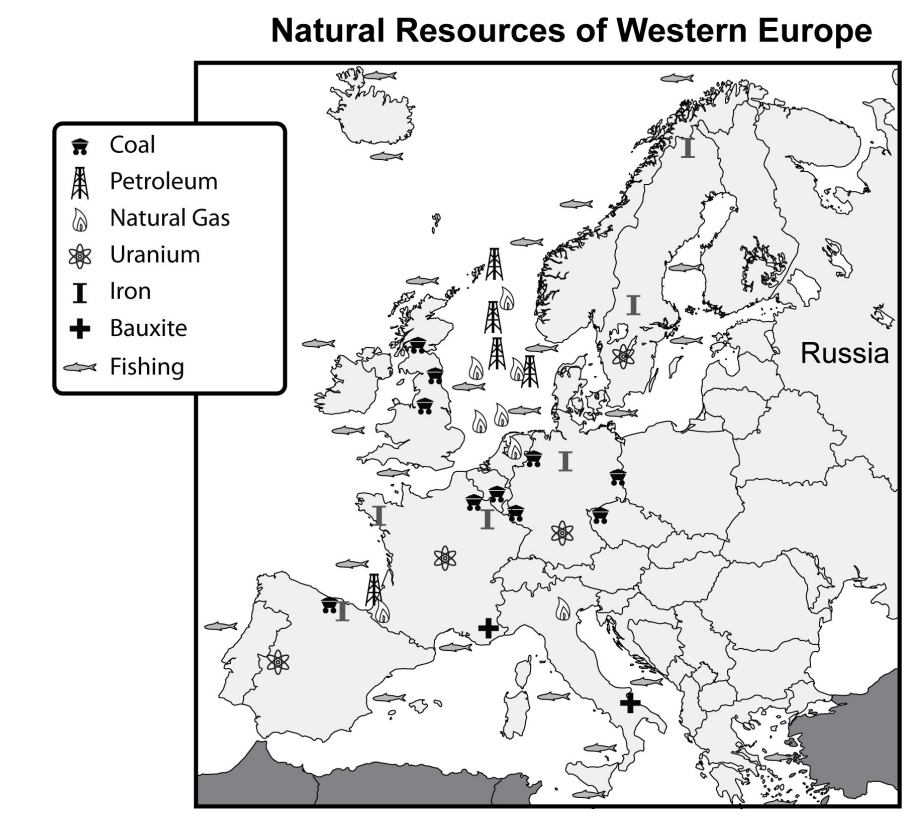
Based on the map what natural resource helped to support industrial development in both Britain and Germany?
A Iron
B Coal
C Natural Gas
D Petroleum
B Coal
Which of the following statements about the Hundred Years’ War is accurate?
A It was a war between Spain and England.
B It lasted less than 100 years.
C It contributed to the spread of the Black Death.
D It resulted from differences between Catholics and Protestants.
C It contributed to the spread of the Black Death.
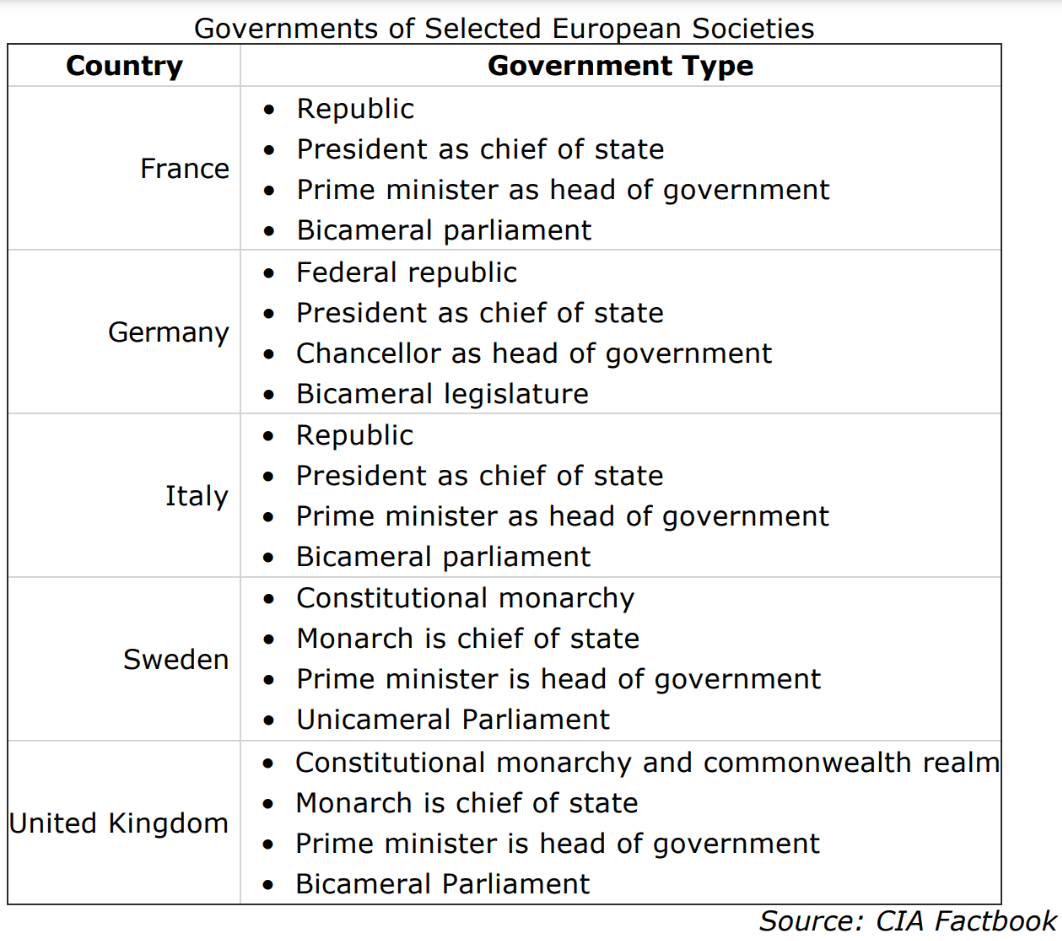
Based on the information in the table, what is one way that many governments in Europe are similar?
A Most are considered to be limited monarchies.
B They were modeled after the U.S. government.
C Power is shared between two executive leaders.
D Revolutions brought about the political systems.
C Power is shared between two executive leaders.
Europe is considered a peninsula of peninsulas, which explains why many countries in the region -
A experience very cold climate conditions
B depend on the sea for economic growth
C lack political connections with each other
D use terrace farming to support the population
B depend on the sea for economic growth
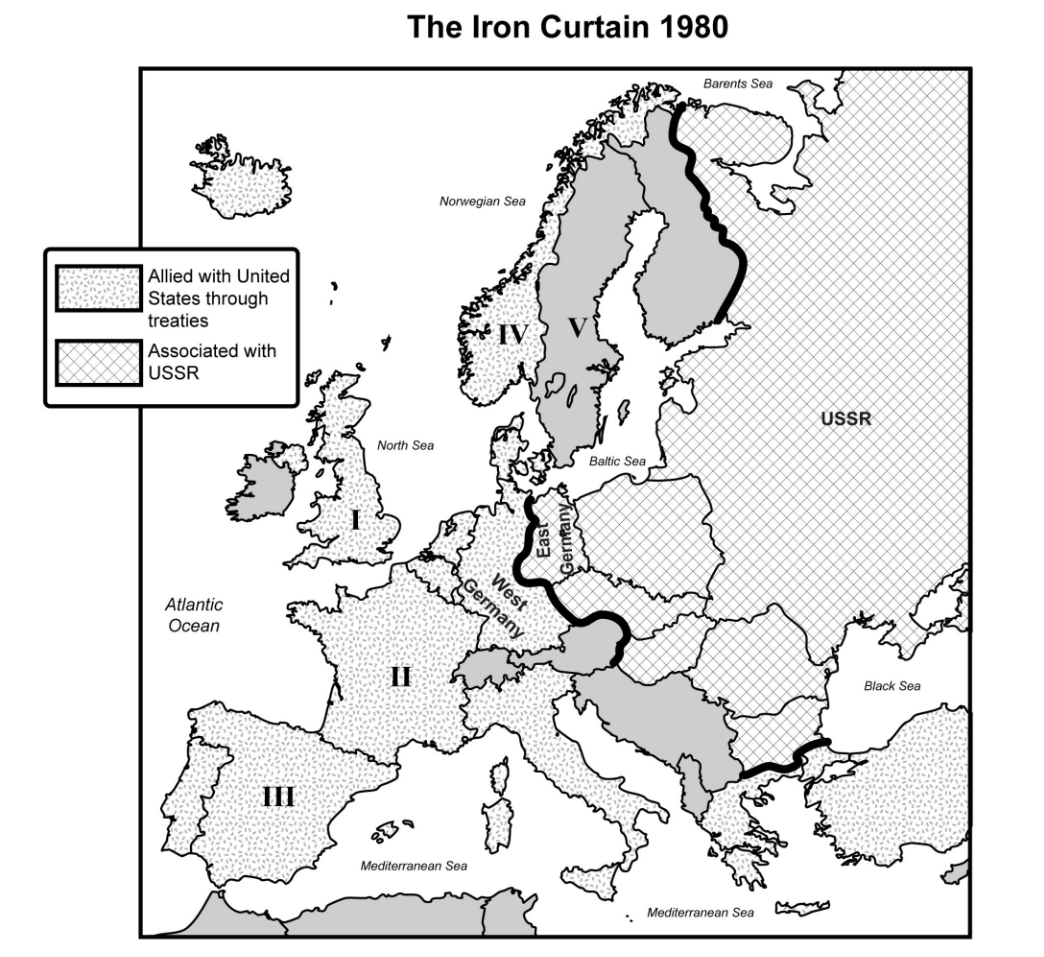
Which of the following correctly identifies the location of European countries based on the map?
A I. England; II. France; III. Spain; IV. Sweden; V. Norway
B I. England; II. Spain; III. France; IV. Norway; V. Sweden
C I. England; II. France; III. Spain; IV. Norway; V. Sweden
D I. France; II. England; III. Spain; IV. Sweden; V. Norway
C I. England; II. France; III. Spain; IV. Norway; V. Sweden
Why did Emperor Constantine move the capital of the Roman Empire from Rome to Constantinople?
A He preferred Constantinople’s climate and food.
B He wanted a site that would be less threatened by barbarian invaders than Rome.
C He wanted to live in the city bearing his name.
D He wanted a location on a sea route to China.
B He wanted a site that would be less threatened by barbarian invaders than Rome.
What is one reason that France is Western Europe’s leading agricultural producer?
A France imports more grain than any other nation in the region.
B France has a drier climate than any other nation in the region.
C France receives more rain than any other nation in the region.
D France devotes more land to agriculture than any other nation in the region.
D France devotes more land to agriculture than any other nation in the region.
How does physical geography in Europe affect the distribution of goods?
A A warm, temperate climate allows for year round work in Europe.
B Mountain barriers have closed off access to overland routes in Europe.
C Numerous highways have been built across the Northern European Plains.
D Navigable rivers and harbors provide many European cities with trading ports.
D Navigable rivers and harbors provide many European cities with trading ports.